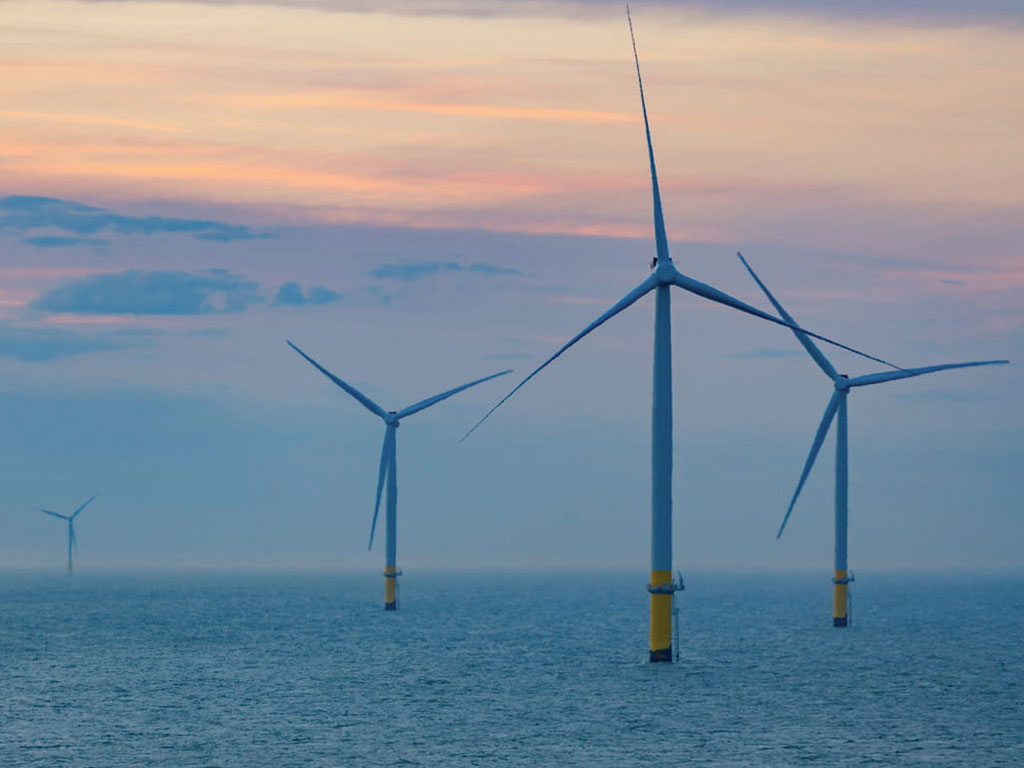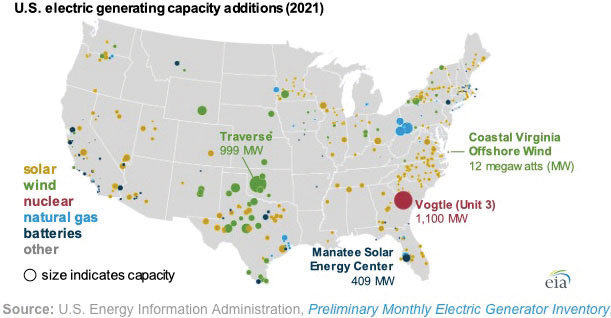Policy commitments to generate $1 trillion in investments and one-million jobs
Wind power will be a major beneficiary of President Joe Biden’s policies, assuming the new administration can implement them successfully. The United States is already on its way toward shifting to renewable energy, but Biden’s avowed preferences would turbo-charge that trend.
According to the U.S. Energy Information Administration, most of the 40 gigawatts of new electricity generating capacity planned for 2021 will come from renewables, with wind accounting for 31% of the total. Most of the 12 gigawatts of new wind capacity scheduled to come online this year will originate in land-side projects in Texas and Oklahoma. The 12-megawatt Coastal Virginia Offshore Wind pilot project started generating electricity in September 2020 and is planned as the country’s largest offshore wind project once it is built out by 2026. (See Peter Buxbaum’s article Jones Act won’t stop US offshore wind)

Renewables Will Trigger Investment
Even before the Biden administration took office, the outgoing Congress passed legislation which included additional incentives for wind power and other forms of renewable energy. The COVID-19 legislation, signed by former President Trump at the end of 2020, included extensions of land-based and offshore wind investment tax credits.
Wind energy advocates are pushing for the majority of U.S. electrical output to be generated by renewables within the next few years. A recent study from the American Clean Power Association (ACP) indicated that effort will require $1 trillion in capital investments and will support the creation of one-million jobs.
“A majority renewables electric system for the U.S. is possible within a decade,” said Amy Farrell, an ACP senior vice president. Such an effort will have the effect of reducing U.S. carbon emissions by over 60%, she added. That will bring emissions in line with the country’s target under the Paris climate agreement, an accord which Biden has said he wants the U.S. to rejoin.
Bringing this vision to fruition will require a shift in government policies and the initiation of new financing schemes. The ACP analysis found that administrative actions alone—by providing easier access to federal lands and waters and by supporting technology advancements—could grow renewable energy from 19% to 37% of U.S. electricity generation. Legislative initiatives that incentivize improving the grid infrastructure will, among other things, help offshore wind deliver power to consumers where it is needed most, especially in the Northeast, the report said.
Administrative and legislative actions can also be a major source of economic stimulus, creating one-million jobs in construction, installation, operations, manufacturing, and the supply chain. The ACP study found that Indiana, Pennsylvania, California, Ohio, New Jersey, New York, and Virginia will each gain over 30,000 new jobs. Illinois, Maryland, and North Carolina will each add over 20,000 jobs, while another 11 states will add at least 10,000 new jobs. These will include positions in the new and expanded domestic manufacturing facilities required to feed local clean-energy supply chains.
Where and how the labor to fill these jobs comes from will depend on training. In 2020, New York State launched a $20 million Offshore Wind Training Institute in Long Island. The state is now seeking proposals for training workers for jobs related to assessment, permitting, design, construction, assembly, deployment, operation, and maintenance of offshore wind projects.

Transitioning to Renewables
The transition to a majority-renewables electric grid will be led by significant growth in land-based wind, offshore wind, and solar capacity, along with a corresponding increase in energy storage development, according to the ACP report. “The job growth and investments associated with these new additions will far outweigh the losses as the nation phases out or retires legacy power technologies,” the study stated.
Renewable projects will also be major contributors to state and local tax revenues, as well as payments to landowners. A 50% renewable energy scheme will deliver $64 billion in taxes and landowner lease payments within a decade, according to the report.
“Transforming the U.S. power grid is technically and commercially feasible, with appropriate policy support,” said Aaron Barr, a principal at Wood Mackenzie, the consultancy that conducted the study for ACP. “This activity would unlock a tremendous economic development opportunity for infrastructure investment and associated jobs.”

A comprehensive set of policies promoting the development of renewable energy worldwide could also have foreign-policy implications, as the Biden administration seeks ways to push back against China’s expanding global influence without unduly provoking tensions or upending trade patterns. A recent report from Brookings proposes that the U.S. take the lead in promoting the development of renewable energy around the world with technical assistance and financing, not only for the sake of reducing greenhouse gas emissions and saving the environment but also to differentiate U.S. energy development policy from China’s, which still emphasizes the exploitation of fossil fuels.
“To make such programs attractive to emerging countries,” the Brookings report said, “the United States should explicitly offer additional clean energy finance to ensure that increased environmental and social oversight does not leave the host country without the energy that it needs for economic growth. USAID programs on capacity enhancement could include a plan for low-carbon energy development, with the promise of affordable financing for it.”
Such a program, according to Brookings, would increase demand for clean energy around the world and lower its costs with economies of scale—while also pressuring the Chinese “to minimize their adverse environmental and social impacts.”
A dual strategy “of low-interest clean energy loans and capacity support would trigger a virtuous cycle,” the report concluded. “By leveraging its financial and technological resources, the United States could move global energy finance in a greener direction while helping emerging countries meet their energy needs.
“This approach will also facilitate the development of renewable energy in emerging economies without further escalating the conflict with China,” the report added. “In the end, this strategy allows us to cope with one of the most pressing issues of our time in a more constructive way.”





